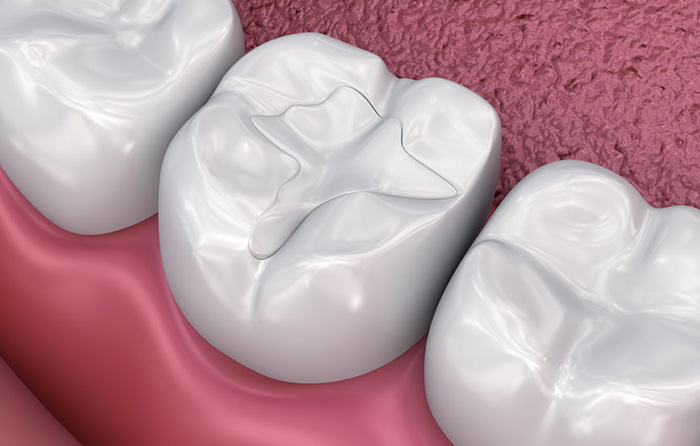Often when a tooth has decay, a fracture or some other type of “structural” defect, the treatment option may be a crown or a filling. One should ask, though, why one or the other? What is the difference in treatment and the likely outcome?
A filling….
A “filling” is just that; filling a hole or “cavity” in a tooth with a “plug” made of either “composite” or “silver”. A “composite” is a dental acrylic which is tooth colored and adheres to the tooth via a dental “glue”. A “silver” filling is a dental material that is a silver colored mixture (amalgam) of silver, copper, platinum, other trace metals and mercury. No glue is used here. Instead, Dr. Lesch will cut additional small angles / slots in the tooth in addition to the cavity removal in order for the silver to “lock in” long term. Both have been used in dentistry for many years and have had wide range of success as a “plug”. Today, due to the advantages of “bonding” and a “tooth colored” filling, Dr. Lesch typically will use composite as the filling material a majority of the time.
A filling, though, is only as strong and long lasting as the amount of natural tooth structure that the filling “sits within”. In other words, a small filling within the middle of a tooth that is surrounded with a lot of strong natural tooth structure may last many years. A filling that is much larger and only has thin areas of tooth structure around it will likely be prone to fracture or displace in a short time.
Where a filling is actually placed on a tooth also matters for long term strength. If a tooth has a large cavity on the bite surface of the tooth and hits on the filling hard when chewing, the large filling inevitably starts to act as a “wedge” over time and often will result in further tooth fracture.
Therefore, the key to remember is a “filling is only as strong as the amount of natural tooth remaining to keep it there”. So the smaller a filling is / can be, the better off for the tooth long term.
A crown….
When more than 50% of the natural tooth is gone due to a fracture or decay, it is often wise to “place a crown” over the tooth. Also known as a “cap”, a crown covers the entire tooth usually to or just below the gum line, encasing it under “one roof”. In order for Dr. Lesch to place a crown, he will trim 1-2 mm of the outside of the tooth away in order to make room for the crown to fit over the tooth. Zirconia is a common tooth colored material used for dental crowns today, and the thickness of a zirconia crown of 2 mm can provide incredible strength and reduce the risk of further tooth fracture and deterioration.
The time and cost to receive a filling or crown can vary depending on the tooth’s need and size of the defect. In summary, Dr. Lesch will explain his findings per your exam, and will often review with you a photo and xray of the tooth / teeth. After answering your questions and concerns, the goal is for you to be able to make an “educated decision” regarding your tooth and receive the treatment that is best for you!

